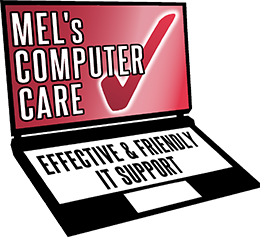
Mel’s Free Top Tips… To click or not to click
Mel’s top tips for checking a link is safe to click
The annual Crime Survey for England and Wales showed that there were 2.11 million victims of cybercrime in the UK in 2015; with this in mind, I wanted to share with you some top tips on how to check if a link is safe to click. When browsing the internet, you will rarely find a place without any kind of reference to a link or hyperlink, leading you to another destination. However, often it can be hard to tell where that destination is, and more importantly, whether it is safe or not. Luckily, there are a number of ways you can check before you’re caught out by an internet fraudster, and by keeping my tips in mind, hopefully you can steer clear of cybercrime altogether.
Make hovering a habit!
This is a really useful tip to know, which will easily allow you to see the real destination of a link – simply hover your cursor over the link (without clicking on it) and it will show you the actual address that the link represents.
Always check the domain name carefully
If a link seems suspicious, one of the easiest ways to get an idea of how safe it may be is to carefully read the domain – and I mean really carefully! Some fraudsters will sneakily replace numbers with letters or vice versa, and from a quick glance most people won’t notice the difference. For example, see these two links:
They look exactly the same, but can you see the difference? The second link actually uses a zero in place of the ‘o’ in computer – sneaky! Things like this are very easy to miss, so make sure you read to check any links you’re unsure of.
When entering financial details, look for ‘https’ not ‘http’
You will notice the letters ‘http’ or ‘https’ at the beginning of a link, and when entering financial or other important details into a website, it’s good to bear in mind that ‘https’ is much more secure.
This simply means that your data is encrypted before being sent across the internet, and for peace of mind, you will see a security padlock icon (see left) next to the web address, so you can be sure everything is secure.
However, don’t take this to mean that a link is 100% secure – if the security certificate isn’t displayed when clicking the padlock icon it could be a spoof address with a fraudster on the other end waiting to get hold of your details. That is why I would recommend applying my tips 1 and 2 above whether the link is ‘http’ or ‘https’.
Stay secure with shortened links too
Unfortunately, my trusty hovering trick doesn’t work with shortened links, which are often found on social networking sites like Twitter just to save space. Not to worry though, I have still have a safety tip to check these kind of links too!
You can do this one of two ways; firstly by using the preview function, where you enter your shortened link into your browser, and put a ‘+’ on the end, which will report back information about the site that the shortened link leads to.
The other way to do this is by using the handy website http://getlinkinfo.com/ which does exactly what it says on the tin! You just copy and paste the link into their site, and it will tell you the destination of where the link points to.
Hopefully, by following my top tips you can be rest assured that you won’t be clicking on any unsafe links, however if you are unsure on the legitimacy of a link, I’m only a phone call away on 0161 977 0107 and can help you double check that everything is safe.
